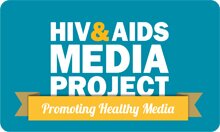President’s Emergency Plan for AIDS Relief
The USA government is one of the main providers of funding in the fight against HIV/AIDS. Funding is provided under the President's Emergency Plan for AIDS Relief (PEPFAR), which is an umbrella organisation for all existing US HIV/AIDS programmes.
Launched in 2003, it is a five-year, $15-billion global plan to combat HIV/AIDS. Of the $15-billion, $9-billion was "new money", $5-billion was to continue existing bilateral agreements and $1-billion was proposed to go towards the Global Fund.
Because the funding had to be passed by Congress, there is political influence in the way money is disbursed. For instance, at least 33% of funding for HIV prevention has to be directed at "abstinence until marriage" programmes. Funding is also skewed towards countries that support the current "war against terror".
Congress required that PEPFAR money is divided as follows:
- 55% for the treatment of individuals with HIV/AIDS (of which 75% between financial years 2006-2008 must be spent on the purchase and distribution of antiretrovirals)
- 15% for the palliative care of individuals with HIV/AIDS
- 20% for HIV/AIDS prevention (of which 33% must be directed at abstinence until marriage programmes)
- 10% for helping orphans and vulnerable children
PEPFAR has been criticised for its policy in only using drugs that do not violate US patent laws. This means PEPFAR-supported programmes are purchasing antiretroviral drugs at much higher prices than other programmes supported by the Global Fund and the World Bank (source).
The programme supports 15 "focus" countries, namely: Botswana, Cote d'Ivoire, Ethiopia, Guyana, Haiti, Kenya, Mozambique,Namibia, Nigeria, Rwanda, South Africa, Tanzania, Uganda, Zambia and Vietnam.

